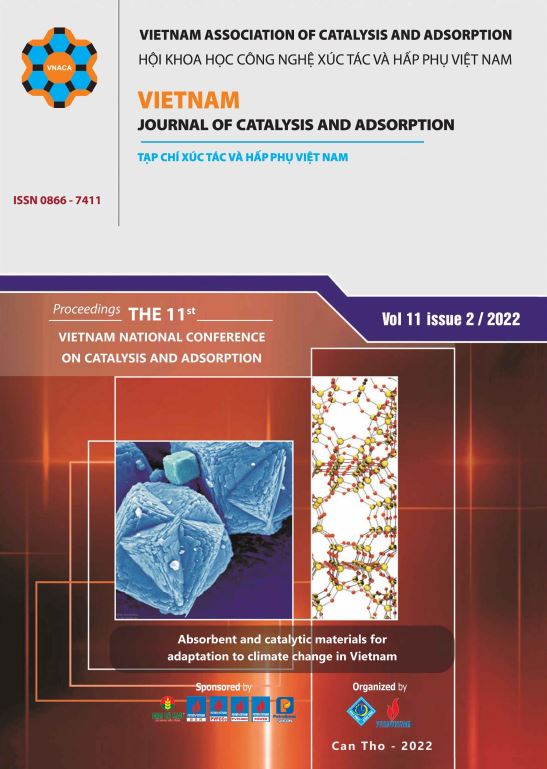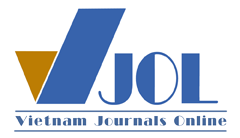Co(II), Cu(II) and Zn(II) complexes of tridentate ONO donor Schiff base ligand: A DFT studies
DOI:
https://doi.org/10.51316/jca.2022.025Keywords:
Transition metals, Tridentate schiff base, Density functional approximations, High-valent metals, Spin statesAbstract
A series of Cu(II), Co(II), and Zn(II), mononuclear Schiff base complexes were studied and characterized by DFT calculations. The ligand was derived from the experiment of condensing 5-acetyl-4-hydroxy-2H-1,3-thiazine-2,6(3H)-dione with o-phenylenediamine. The Schiff base ligand has coordination sites on phenolic oxygen, azomethine nitrogen, and amino group nitrogen, where it behaves as a monobasic tridentate. All studied structure was constructed based on the ration 1:1 (metal: ligand) stoichiometry. Except for the Cu(II) complex, which exhibited a square planar arrangement, the metal complexes exhibited octahedral geometry. The Orca quantum program's Density Function Theory (DFT) level was used to optimize the structure and several structural parameters of the ligand and its metal complexes, including total energy, HOMO, LUMO, and dipole moment. Correlations were established between the calculated and experimental data.
Downloads
References
PP. A. Vigato and S. Tamburini, Coordination Chemistry Reviews 17 248 (2004) 1717–2128. https://doi.org/10.1016/j.cct.2003.09.003
P. G. Cozzi, Chemical Society Reviews 7 33 (2004) 410–421.
https://doi.org/10.1039/b307853c
M. M. Abo-Aly, A. M. Salem, M. A. Sayed, and A. A. Abdel Aziz, Spectrochimica Acta Part A: Molecular and Biomolecular Spectroscopy PB 136 (2015) 993–1000.
https://10.1016/j.saa.2014.09.122
W. H. Mahmoud, R. G. Deghadi, and G. G. Mohamed, Applied Organometallic Chemistry 4 30 (2016) 221–230. https://doi.org/10.1002/aoc.3420
D. Astruc, Organometallic Chemistry and Catalysis. Berlin, Heidelberg: Springer Berlin Heidelberg, 2007. https://doi.org/10.1007/978-3-540-46129-6
K. E. Dalle, J. Warnan, J. J. Leung, B. Reuillard, I. S. Karmel, and E. Reisner, Chemical Reviews 4 119 (2019) 2752–2875. https://doi.org/10.1021/acs.chemrev.8b00392
K. C. Gupta and A. K. Sutar, Coordination Chemistry Reviews 12-14 252 (2008) 1420–1450.
https://doi.org/10.1016/j.ccr.2007.09.005
S. J. Malthus, S. A. Cameron, and S. Brooker, Coordination Chemistry Reviews 316 (2016) 125–161. https://doi.org/10.1016/j.ccr.2016.02.006
N. Raman, S. Johnson Raja, and A. Sakthivel, Journal of Coordination Chemistry 5 62 (2009) 691–709.
P. Gandeepan, T. Müller, D. Zell, G. Cera, S. Warratz, and L. Ackermann, Chemical Reviews 4 119 (2019) 2192–2452. https://10.1021/acs.chemrev.8b00507
É. N. Oiye et al., Critical Reviews in Analytical Chemistry 6 49 (2019) 488–509. https://doi.org/10.1080/10408347.2018.1561242
E. K. Efthimiadou, A. Karaliota, and G. Psomas, Polyhedron 6 27 (2008) 1729–1738 https://doi.org/10.1016/j.poly.2008.02.006
S. J. Sabounchei, F. A. Bagherjeri, C. Boskovic, R. W. Gable, R. Karamian, and M. Asadbegy, Journal of Molecular Structure 1034 (2013) 265–270. https://doi.org/10.1016/j.molstruc.2012.10.051
J. M. Berg, Principles of bioinorganic chemistry. University Science Books, 1994.
M. A. Malik, O. A. Dar, P. Gull, M. Y. Wani, and A. A. Hashmi, MedChemComm 3 9 (2018) 409–436.
W. Radecka-Paryzek, V. Patroniak, and J. Lisowski, Coordination Chemistry Reviews 21-22 249 (2005) 2156–2175. https://doi.org/10.1016/j.ccr.2005.02.021
T. Katsuki, Chemical Society Reviews 7 33 (2004) 437–444. https://doi.org/10.1039/b304133f.
R. M. Clarke and T. Storr, Dalton Transactions 25 43 (2014) 9380–9391.
https://doi.org/10.1039/C4DT00591K
V. Balzani, A. Juris, M. Venturi, S. Campagna, and S. Serroni, Chemical Reviews 2 96 (1996) 759–833. https://doi.org/10.1021/cr941154y
T. Nguyen Duc, H. Dao Xuan, L. Ho Huu, and T. Nguyen Ngoc, Vietnam Journal of Catalysis and Adsorption 2 9 (2020) 114–118. https://doi.org/10.51316/jca.2020.038
Downloads
Published
Issue
Section
How to Cite
Share
Funding data
-
Trường Đại học Bách Khoa Hà Nội
Grant numbers T2020-TT-009











